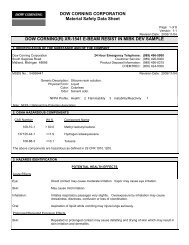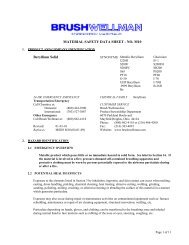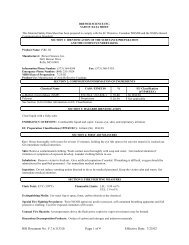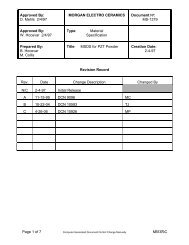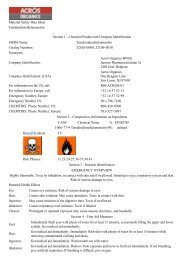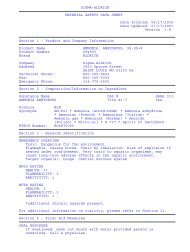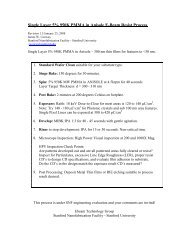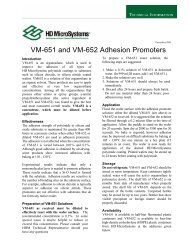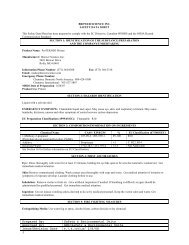EE 410 / Saraswat Handout #3 - Stanford Nanofabrication Facility
EE 410 / Saraswat Handout #3 - Stanford Nanofabrication Facility
EE 410 / Saraswat Handout #3 - Stanford Nanofabrication Facility
You also want an ePaper? Increase the reach of your titles
YUMPU automatically turns print PDFs into web optimized ePapers that Google loves.
<strong>EE</strong><strong>410</strong> / <strong>Saraswat</strong> <strong>Handout</strong> <strong>#3</strong><br />
• Visual inspection for gross defects, surface quality, and color (for semi-transparent films).<br />
• Rework is possible, depending on the problem.<br />
After etching:<br />
• Microscope inspection of sample wafers for pattern resolution and etch quality.<br />
• Thickness/uniformity measurement of sample wafers by Nanospec or profilometry, as<br />
appropriate<br />
• Visual inspection for gross defects, surface quality, and color.<br />
• Rework or re-etch may be possible, depending on the problem.<br />
After resist stripping:<br />
• Microscope inspection of sample wafers to ensure resist removal. Check also for pattern<br />
resolution and etch quality.<br />
• Thickness/uniformity measurement of sample wafers by Nanospec or profilometry, as<br />
appropriate.<br />
• Visual inspection for residual resist, gross defects, surface quality, and color.<br />
• Rework may be possible, depending on the problem.<br />
Whenever handling wafers:<br />
• Such as upon manual loading and unloading from furnaces or on transferring to different wafer<br />
boats or cassettes:<br />
• Visual inspection for residual resist, gross defects, surface quality, and color.<br />
• Rework may be possible, depending on the problem.<br />
2C. Record Your Observations!!<br />
This simply cannot be emphasized enough. If there are problems, or if the run works and you want to<br />
recreate it exactly, it is absolutely important to have good notes. While this is true in general for lab<br />
work, it is doubly true in the clean room, since we have so many hundreds of variables to control.<br />
• Make sure that you record any important processing details and/or problems that you observe on<br />
the run sheets. A good record of important observations will become extremely important<br />
especially when you are trying to account for anomalies in subsequent processing and in wafer<br />
testing.<br />
• Information worth recording: the specific equipment used, the date and time the wafers were<br />
processed on the equipment, who did the processing (if not you), any general observations (such as<br />
wafer color or other appearance), processing problems (i.e., any equipment warning noted, whether<br />
you think it directly affects your process at the time or not), any rework done, any anomolies<br />
observed on specific wafers (making sure to include wafer ID's.) Remember: the smallest detail<br />
may be an important clue later!<br />
• It is a good idea to sketch wafer cross-sectional and top-view diagrams after various processing<br />
steps. This exercise will undoubtedly better your understanding of what is happening to the wafers.<br />
• Make sure to keep your notes in a traceable, organized fashion -- remember. Use your lab<br />
notebook and/or a detailed runsheet. Common newbie mistake: relying on notes taken on lab<br />
wipes!<br />
Revised Jan. 11, 2008 Page 5/47




